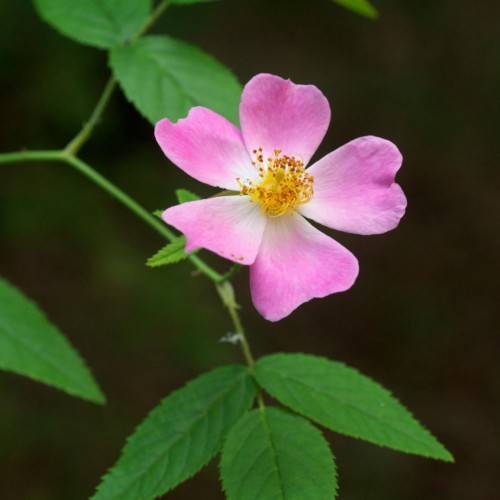
prairie rose
Rosa setigera
Cycle:
Perennial
Watering:
Frequent
Hardiness Zone:
5 - 8
Flowers:
Flowers In Summer
Sun:
Full sun,part shade
Soil:
Sandy Loamy Clay
Fruits:
Fruits Ready In Fall
Leaf:
Yes
Growth Rate:
High
Maintenance:
Moderate
Drought Tolerant:
Yes
Salt Tolerant:
Yes
Invasive:
Yes
Care Level:
Medium
watering
Prairie rose (Rosa setigera) need to be watered every 3-4 days during the summer months. During each watering, the plant should be given about 1/2-1 inch of water, or enough to moisten the top 6-10 inches of soil. Make sure to avoid runoff and water for at least 10 minutes to ensure the water reaches the plant's roots. During cooler months, you can reduce watering to every 1-2 weeks. It is very important to check the soil for moisture content before watering and only water when dry to avoid overwatering.
sunlight
Prairie rose plants (Rosa setigera) typically require 6 to 8 hours of direct sunlight per day. This sunlight should occur during the morning or early evening hours when the sun is not at its strongest. For best results, sites should receive full sun year-round and be exposed to direct light for at least 4 hours each day. Avoid hot, dry, and windy sites that can desiccate and scorch the foliage. The use of reflective surfaces, such as light-colored walls or white curtains, can help concentrate light in areas where it is limited.
pruning
Prairie rose plants (Rosa setigera) should be pruned lightly in the early spring before new growth begins. Pruning should only remove dead, diseased, or crossing branches, and should reduce the total shoot density by approximately 1-third of the plant's overall interior branches. Avoid pruning the plants after June 30th, as this can reduce flowering for the next blooming season.
